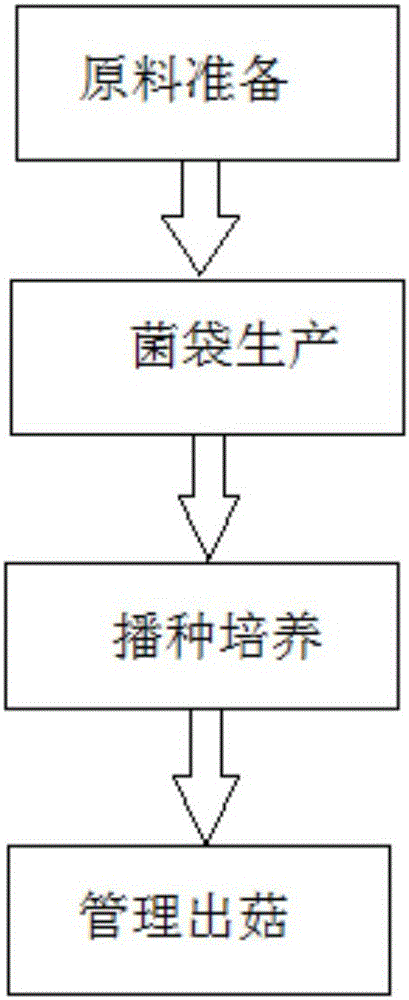Pleurotus eryngii compost and method for culturing pleurotus eryngii
A technology of Pleurotus eryngii waste and Pleurotus eryngii, applied in mushroom cultivation, botanical equipment and methods, cultivation, etc., can solve the problems of a large amount of edible fungus waste, and achieve the effect of being healthy and suitable for consumption
- Summary
- Abstract
- Description
- Claims
- Application Information
AI Technical Summary
Problems solved by technology
Method used
Image
Examples
Embodiment 1
[0028] A pleurotus eryngii compost, which comprises the following components by weight percentage: miscellaneous sawdust: 10 parts; bagasse: 5 parts; corn cob: 15 parts; wheat bran: 5 parts; soybean meal: 5 parts; corn flour: 4 parts Pleurotus eryngii waste: 20 parts; Gypsum: 15 parts; Lime: 10 parts; Wheat straw ash: 20 parts; Tea dregs: 10 parts.
Embodiment 2
[0030] A kind of Pleurotus eryngii culture material, it comprises the component of following percentage by weight:
[0031] Wood chips: 20 parts; Bagasse: 15 parts; Corn cob: 25 parts; Wheat bran: 15 parts; Soybean meal: 6 parts; Corn flour: 5 parts; Pleurotus eryngii waste: 30 parts; 15 parts; wheat straw ash: 30 parts; tea leaves: 15 parts.
Embodiment 3
[0033] A kind of Pleurotus eryngii culture material, it comprises the component of following percentage by weight:
[0034] Sawdust: 15 parts; Bagasse: 10 parts; Corn cob: 20 parts; Wheat bran: 10 parts; Soybean meal: 5.5 parts; Corn flour: 4.5 parts; Pleurotus eryngii waste: 25 parts; 13 parts; wheat straw ash: 25 parts; tea leaves: 12 parts.
[0035] As shown in Figure 1, a kind of method of cultivating Pleurotus eryngii comprises the following steps:
[0036] (1) Preparation of raw materials:
[0037] Mix the above raw materials according to the ratio, add tap water that is 1 times the weight of the raw materials, and mix well;
[0038] (2) Bacteria bag production:
[0039] Put the raw materials mixed with water into polyethylene bags, 1.3kg per bag; keep at a constant temperature of 100°C for 12 hours to sterilize, and after cooling, inoculate and cultivate in conventional methods until the mycelium matures;
[0040] (3) Sowing and cultivating:
[0041] Dig a shallow ...
PUM
 Login to View More
Login to View More Abstract
Description
Claims
Application Information
 Login to View More
Login to View More - R&D
- Intellectual Property
- Life Sciences
- Materials
- Tech Scout
- Unparalleled Data Quality
- Higher Quality Content
- 60% Fewer Hallucinations
Browse by: Latest US Patents, China's latest patents, Technical Efficacy Thesaurus, Application Domain, Technology Topic, Popular Technical Reports.
© 2025 PatSnap. All rights reserved.Legal|Privacy policy|Modern Slavery Act Transparency Statement|Sitemap|About US| Contact US: help@patsnap.com

